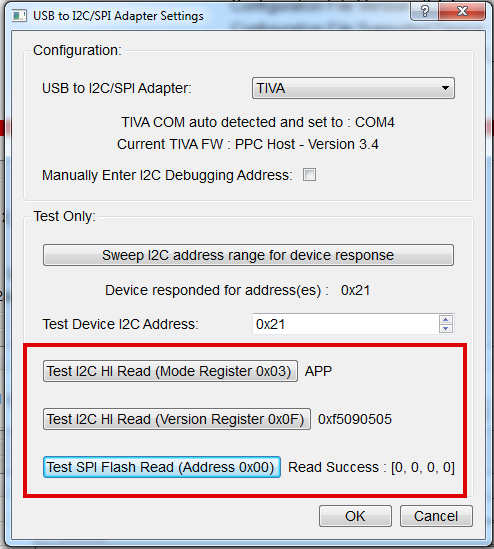Other Parts Discussed in Thread: TPS65981, TPS65988
Hi,
I'm having trouble modifying the TPS65982 using the application customization tool version 6.1.1. and an Aardvark programmer.
Whenever I change anything in the GUI it's not persistent, either when I flash from the current project (default reg 0 0x2000 and reg 1 0x20000), or save the file to a bin and flash it from the gui either way.
I've tried both full flash images and low region only.
I can read I2C and spi, and don't get any errors when writing. However, nothing of my changes show up in the debug/config registers when I reboot and connect the GUI.
I'm looking at the boot flags. Is it possible I may have an invalid region and it's skipping the changes? How am I getting invalid regions when I'm working within the GUI?
What else can I try?
thanks,
Dave.



